
— Liam Murphy
It’s Mitsubishi Australia’s best-selling model – and now the Outlander medium SUV has received a slew of updates for 2025 aimed at rectifying what many believed to be its previous version’s biggest weakness: ride and handling.
Placing emphasis on suspension and steering refinement, as well as an improved cabin experience in general, Mitsubishi isn’t shy about what tops the agenda for the Outlander’s mid-generation update: to be best in class for ride and handling.
Its head office was so impressed with the Australian development for the update, in fact, that the handling tune we tested has already been applied to Outlander globally. No small feat. We had the chance to assess the 2025 Mitsubishi Outlander on the very South Australian roads on which it was developed to see how the team has done.
Pricing is up at least $2000 across the board for purely internal combustion-powered 2025 Mitsubishi Outlander models, with updated plug-in hybrid variants due later in the year.
Pricing now starts from $39,990 for a front-wheel-drive (FWD) entry-level ES grade, climbing to $43,290 for a front-driven LS trim, while a FWD Aspire can be had from $47,790. Opting for an all-wheel-drive (AWD) configuration adds $2500 to the price for all grades.
Closing out the range are the Exceed and Exceed Tourer, available only in AWD, at $55,140 and $57,990 respectively. All prices are before on-road costs.
The 2025 Mitsubishi Outlander’s pricing remains sharp against the competition, with cost of entry drawing near the Kia Sportage’s $37,990 and undercutting the segment-leading Toyota RAV4’s $42,260. Its flagship also comes in cheaper than the RAV4 Edge hybrid AWD ($58,360) and the Sportage GT-Line 1.6-litre turbo-hybrid AWD ($60,370).
The 2025 Mitsubishi Outlander is covered by Mitsubishi Australia’s standard five-year/100,000km warranty, able to be increased to 10 years and 200,000km conditionally if the vehicle is serviced within the Mitsubishi network.
Capped-price servicing can also be had for the entire 10 years of coverage, ranging from $320-370 per visit within the first five years to $360-680 for visits within the following five.
Describing the 2025 Mitsubishi Outlander update as ‘a facelift’ feels a bit disingenuous: its styling tweaks are almost indistinguishably minor, however have generally been made for the better.
A 12.3-inch centre touchscreen and driver display measuring the same now come standard on all grades, able to wirelessly project Android Auto and Apple CarPlay, and its own sat nav.
Black cloth upholstery comes fitted to ES and LS, with Aspire scoring black microfibre, while Exceed buyers get the choice of black or light grey leather accenting. Seat ventilation has been added to Exceed and Exceed Tourer, with the latter’s orange leather swapped for a classy ‘brick brown’ in the update.
Additional centre console storage has been gained via relocated cupholders that the hand finds more naturally. The volume dial has also been moved to the centre to provide passengers with more access. These are the kinds of changes that seem trivial to read in a car review, but really do translate to an improved cabin experience when you climb inside.
Mitsubishi has dropped seven-seat configurations from Exceed and Exceed Touring trims in favour of a full-size spare tyre, claiming buyers at that end of the range care more about the security of a spare than a third row. An interesting call.
For grades that do retain the three-row layout, comfort is considerable even in the bleachers thanks to a sliding second row – all this despite Mitsubishi humbly claiming the Outlander is more of a “five-plus-two” than a true seven-seater. Legroom is adequate even with two occupants stacked behind a comfortable driver’s seat position, and the first and second rows provided good support over our long test loops.
Second row-seated passengers get two air vents, with Exceed and Exceed Touring buyers gaining temperature controls for their third zone of climate control. LS and up scores two USB-C ports in the rear of the centre console.
A new partnership with speaker producer Yamaha has seen some impressive sound systems added to the updated Outlander. A ‘Premium’ eight-speaker system comes fitted on all graded up to Exceed, with Exceed Tourer getting a 12-speaker ‘Ultimate’ system. We damaged our ear drums testing both at the extreme and can conclude buyers won’t be disappointed with either.
Externally, the new version is almost identical to its predecessor, still riding on the fourth-gen platform launched in 2021. Very slight tweaks to bumper lips front and rear and the front grille need to be pointed out to be noticed. All grades ride on alloy wheels, with the 18-inch wheels fitted on ES and LS growing to new-design 20-inch units for Aspire and up.
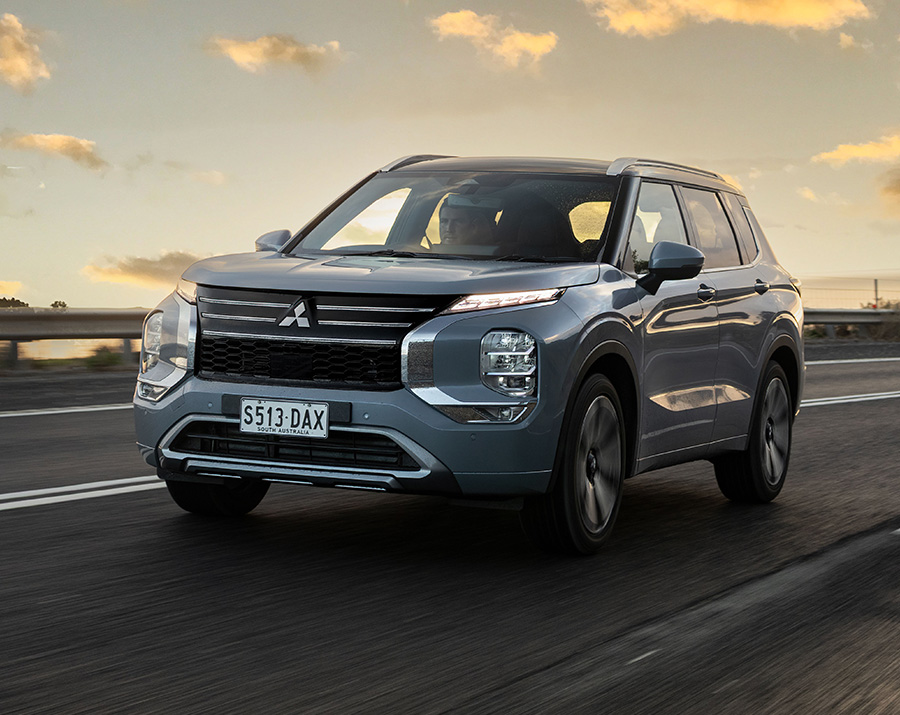
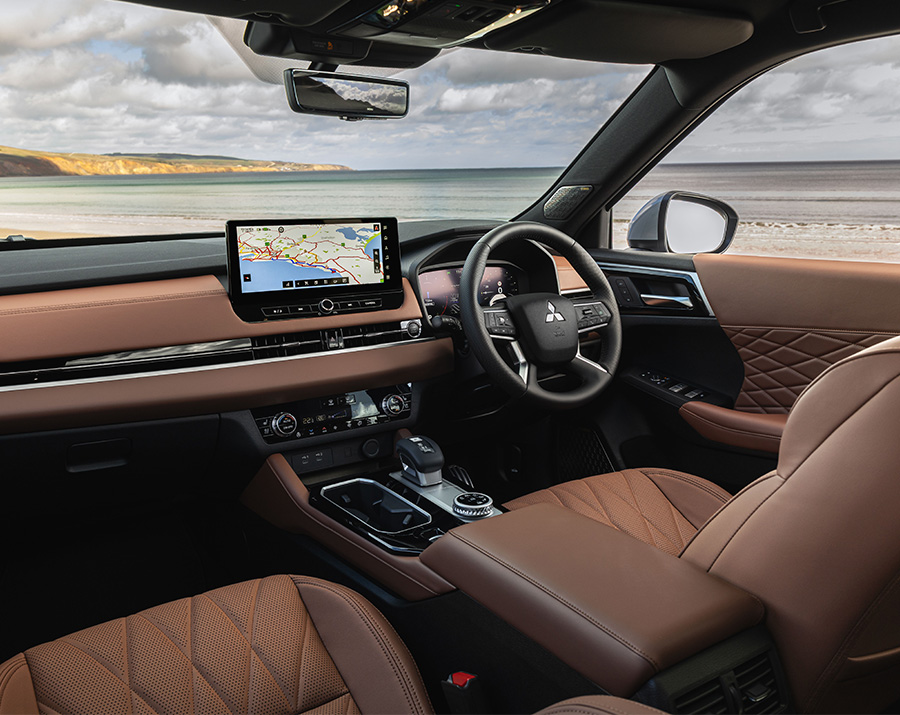
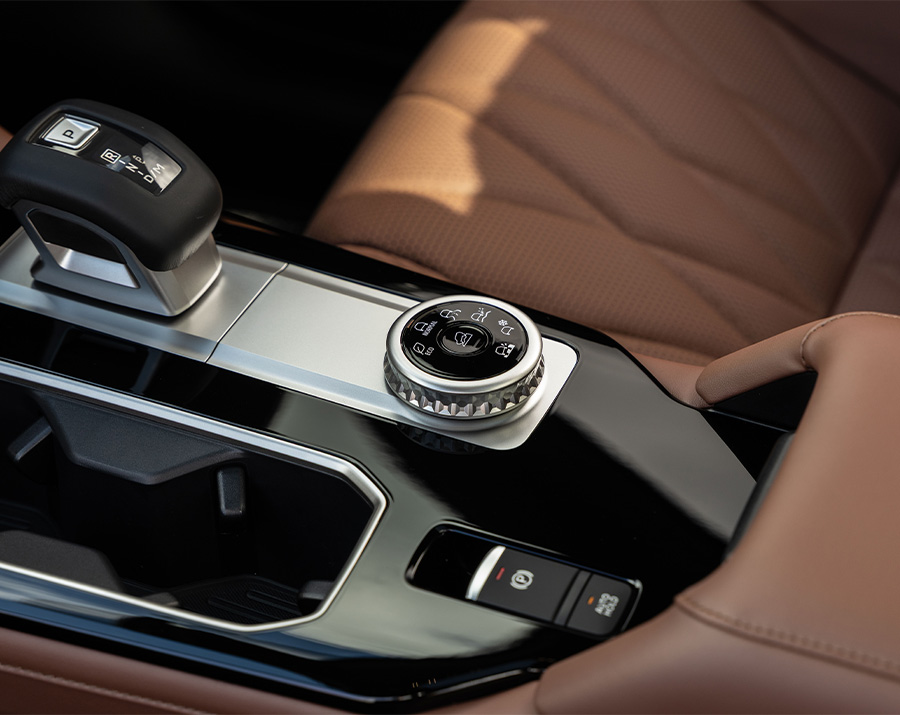



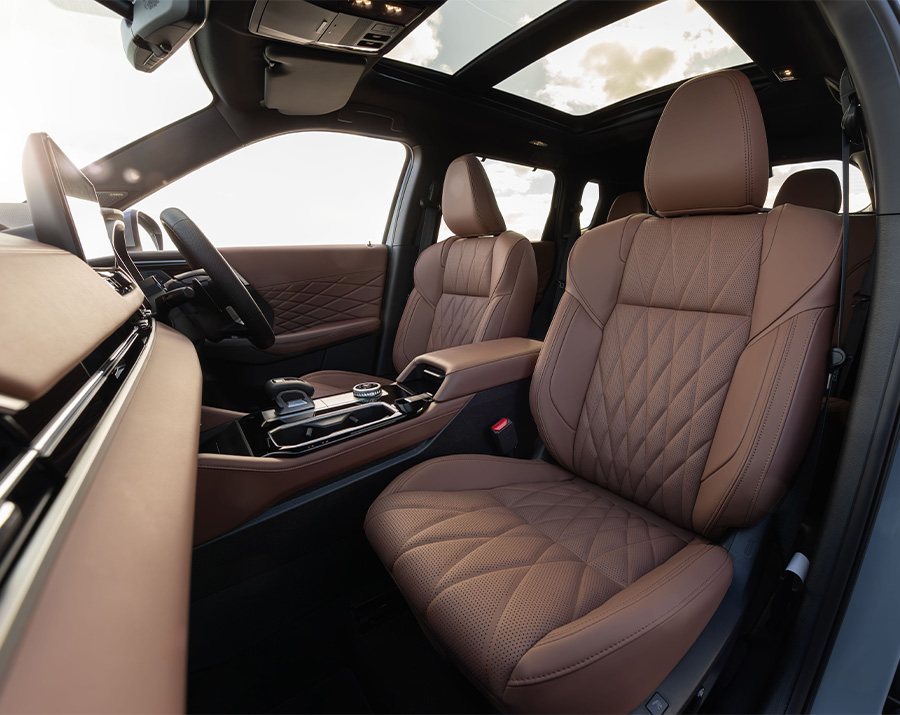

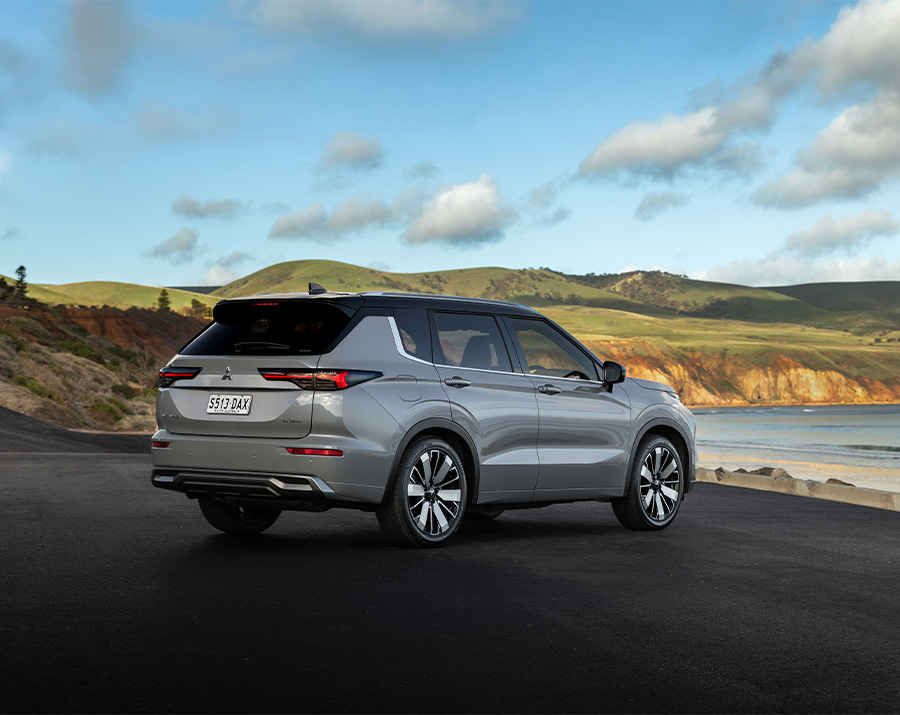
Continuing the theme of slight but tangible improvements, the 2025 Mitsubishi Outlander also scores more standard equipment.
All grades from Aspire up get electrically adjusted front seats (with a memory added on Exceed and Exceed Touring, and a massage function added to Exceed Touring), LED interior lighting and beefed-up wireless charging pad and USB-C ports.
Mitsubishi Connect – the brand’s connected car service – now comes standard, giving owners remote access to certain vehicle functions and alerts through a phone app. Google Places is also installed on LS grade and up, adding live updates to navigation such as up-to-date fuel prices.
Aspire and trims above it now score heated steering wheels, with Exceed and Exceed Tourer additionally gaining a digital rear-view monitor, sports pedals, lamps in the front doors, tri-zone climate control and a panoramic sunroof. Rear seat heating is also added to Exceed Touring.
The 2025 Mitsubishi Outlander carries over its previous five-star ANCAP safety score awarded in 2022.
Helping the Outlander to achieve this score is standardly fit predictive forward collision warning, adaptive cruise control, lane departure and blind spot warnings, a rear cross-traffic alert, a driver monitoring system and 360-degree camera.
Aspire grade and up is fitted with Mitsubishi’s ‘Mi-Pilot’ driver assistance system, adding stop-go functionality to adaptive cruise, lane-keep assistance and road sign recognition.
All pure internal combustion engine-powered 2025 Mitsubishi Outlanders come fitted with the same 2.5-litre four-cylinder petrol unit as seen before.
Outputs are rated at 135kW and 244Nm, sent through a CVT mimicking eight drive ratios to either the front or all four wheels depending on specification.
Fuel consumption for ICE models is claimed at 7.5 to 8.1 litres per 100km depending on trim level and drivetrain configuration, rated on a generous NEDC-derived testing system.
In September, the refreshed Outlander PHEV will arrive. While local specification hasn’t yet been confirmed, the 2024 Outlander PHEV was powered by a 2.4-litre petrol engine with two electric motors, providing total system outputs of 185kW and 450Nm, and an electric-only driving range of 84km thanks to a 20kWh battery pack.
Doing things a little differently, Mitsubishi Australia provided us with both 2024 and 2025 Outlander variants to test back-to-back during out assessment. With the refreshed model’s focus on ride and handling, it seems logical to start there.
Well, it’s improved, vastly. Mitsubishi’s goal of a “more sophisticated and engaging drive experience” gets the tick, with the new Outlander providing much-improved bump absorption and damping characteristics than its predecessor. Complementarily, cabin comfort is also way up – arguably to benchmark standard – thanks to strategic placement of additional sound insulation material in 10 key locations.
Turn-in has been improved, with a larger dead space dialled into steering. Seemingly contradictory, but the result is a less finnicky driving experience, requiring less driver intervention to keep the Outlander pointing straight on sub-par road surfaces, followed by greater stability and poise when corners are encounters.
However, holding Mitsubishi to its word, is the Outlander now best in class? The answer is still no.
The new Outlander was benchmarked against different segment rivals for different ride and handling metrics; the end result is a car that feels much more comfortable but somehow less cohesive than its predecessor.
Some less-than-desirable handling gremlins remain, including a disconnected feeling from the front axle over mid-corner bumps, and aggressive nose-dive under hard braking (that more than once during our testing required steering adjustments to keep the rear straight), topping our notable mentions.
Whether further fettling is required or Mitsubishi has simply reached the limits of the fourth-generation model’s chassis, we’re not sure. The simple takeaway? The new Outlander’s ride is vastly improved, but the bar started low and has not been elevated to the point of best in class just yet. However, all in all, this is an improvement.
Assessing the 2025 Mitsubishi Outlander requires a holistic approach. Does the new model hit the mark of providing best in class ride and handling? No. Should Mitsubishi (both in Australia and globally) be applauded for setting itself a huge goal in a brutally competitive segment, and going a large chunk of the way to achieving it? We think yes.
It was a top five best-seller in Australia before, and it’s just been made better in just about every way – both in handling dynamics and standard tech inclusions – with only a minor price creep. If you liked the pre-update Mitsubishi Outlander, there’s really not many reasons why you wouldn’t like this one even more.
Pros: more refined driving experience; great cabin comfort; more standard tech.
Cons: retains some handling gremlins; lacklustre powertrain; reduced seven-seat offerings across range.